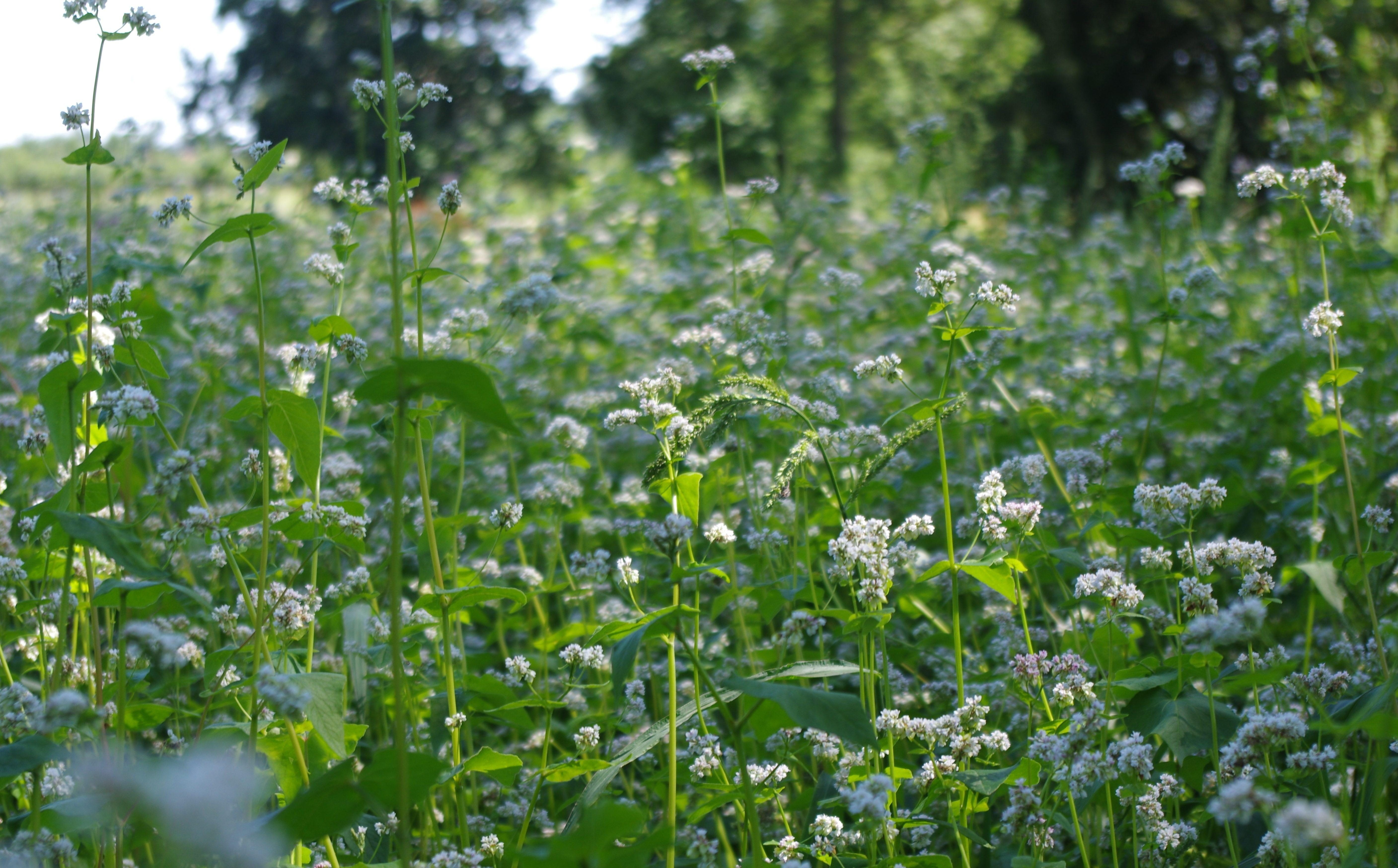Mixed cultures, new crops and old varieties
From an agroecological perspective, there is a strong focus within the Experimental Platform for Agroecology in Hansbeke on mixed cultures including:
- micro clover (small-leaved creeping cover crop) in which a main crop such as a cereal is direct-sown.
- a combination of grass and clover and/or alfalfa in which cocksfoot is chosen, instead of English ryegrass, because of its more intensive rooting and drought-resistance. Tall fescue is also grown in combination with clover on the wettest fields.
- several grain-pulses combinations (e.g. field bean or field pea with triticale) as roughage or concentrated fodder for ruminants
Experiments are performed with new crops, e.g. buckwheat, for the bakery sector. For cereals, preference is given to old varieties or those selected under organic growing conditions.

New crops and old varieties provide crop diversification in the cultivation plan and can also be used in mixed cultures. Old varieties may be excellently adapted to the local environment and are able to give good yields at lower fertilization levels. Consumers are also increasingly interested in old varieties but also in new crops to add new flavors and variety in the menu.